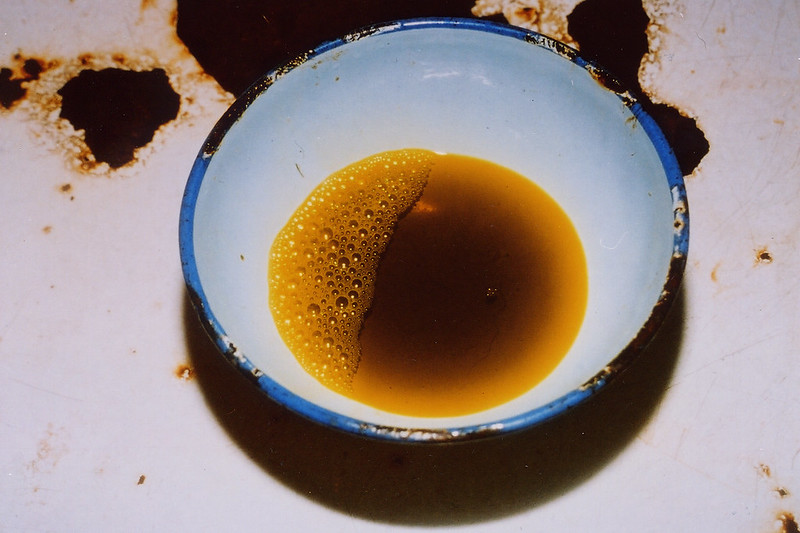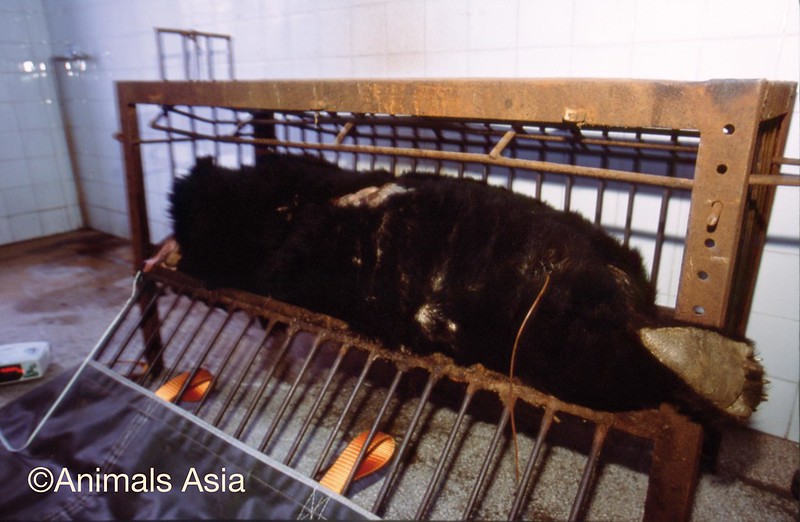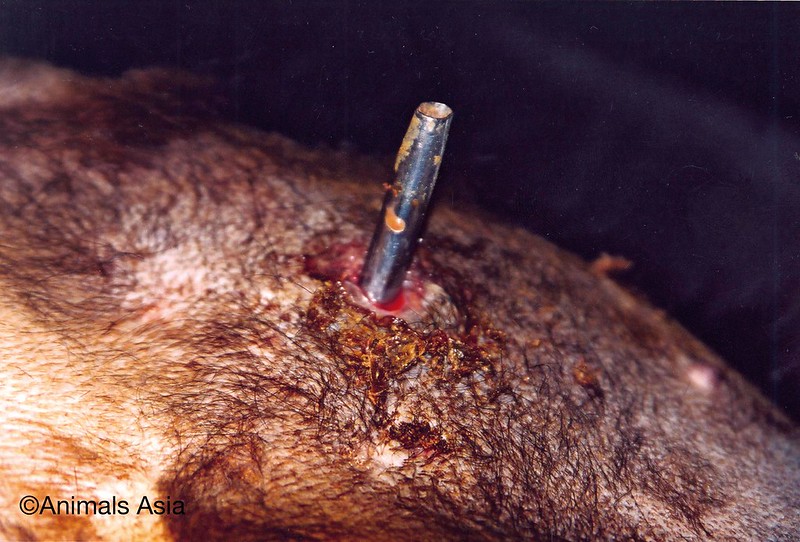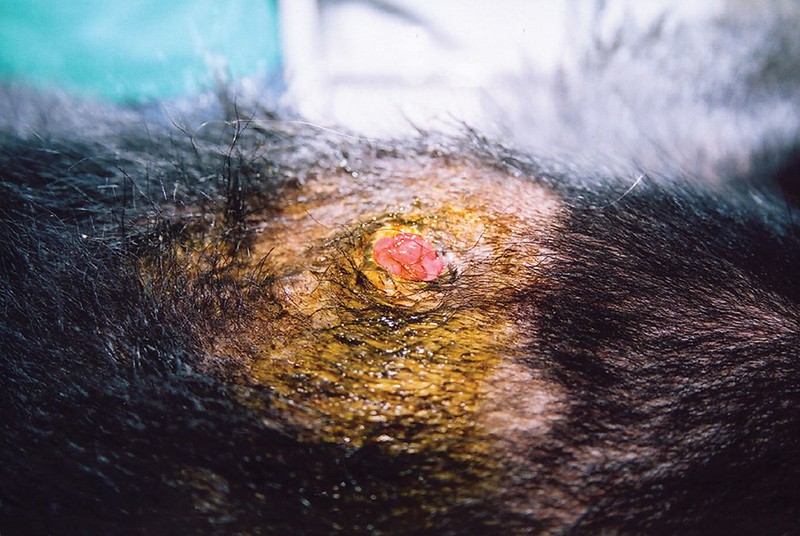Six horrific ways bile is extracted from bears for traditional medicine
10 January 2018
There is simply no humane way of doing something as inhumane as extracting bile from a bear who should be roaming the wild but is instead is locked up in a cage.
Since bear bile farming started in the 1980s, bile has been utilised for a range of spurious products such as sodas, wine, hangover cures, face creams and toothpaste – with thousands upon thousands of magnificent bears paying the price for it.
While bear bile contains high levels of ursodeoxycholic acid known to be useful for treating liver and gall bladder conditions, this can be synthetically produced in laboratories, while medicinal literature lists dozens of herbal alternatives.
Yet, demand for the original product continues and the horrifying means of extraction have left countless bears mentally scarred, physically broken or plagued with life-shortening diseases such as cancer.
We must warn you that the following methods of bile extraction read like a medieval horror story. It’s difficult to comprehend that anyone could inflict such torture on an innocent animal. However, knowledge is power in our fight to shut down bear bile farming for good so we encourage you to read on and put yourself, for a moment, in the bear’s skin.
Here are the various methods of bear bile extraction we have encountered in China and Vietnam over the past 19 years. Keep in mind, bears have been known to endure these conditions for up to 30 years – their entire lifetime.
CHINA
Latex catheter
A latex catheter is surgically implanted into the bear’s abdominal wall and gall bladder.
In some instances, the catheter is surgically embedded under the skin from the abdomen to the hip, where it exits and enables the farmer to extract the bile at a safe distance from the bear’s head. This method allows 50ml-100ml of bile to be tapped from each bear twice daily, but is prone to blocking, as the bile crystallises.
Although against regulations in China, evidence of this method is commonly seen in bears at our Chengdu sanctuary.
Metal jacket
A rubber pipe is surgically connected to the bear’s gall bladder and attached to a fluid bag inside a metal box. To hold the box in place against the bear’s abdomen, the bear is fitted with a metal jacket weighing more than 10kg. Sometimes there is a spike protruding from the jacket and up to the bear’s neck, to prevent the bear from biting down and trying to remove the jacket.
Bile is emptied from the bag about every two weeks.
To drain the bile bag, the farmer must crawl under the bear’s cage to unlock the metal box. Bears wearing metal jackets often suffer from chronic infection, hair loss and skin irritations.
Even though the use of metal jackets is against regulations, we have released many bears from these grotesque devices on our rescue missions.
Metal catheter
Although against regulations in China, we have seen evidence of this method in which a 5-7 inch metal catheter is surgically implanted into the bear’s abdominal wall and gall bladder, allowing daily extraction of the bile.
Bears subjected to this sort of extraction are often kept in “crush cages” which have a metal grille that can be pushed down to immobilise the bear against the bottom of the cage, allowing the farm worker to collect the bile through the bars.
In many instances, farmers keep the metal grille in the crush position indefinitely – sometimes for years – rendering the bear immobile. As these catheters are embedded permanently, they often begin to rust and decompose within the bear’s body.
Free Drip
This extraction method is the only one currently permitted in China and is commonly used on Chinese farms. It involves bears undergoing invasive surgery to create a permanently “open” duct or fistula from the gall bladder to the abdomen which allows bile to drip freely.
As the hole naturally tries to heal itself, each extraction involves poking a metal tube through the membrane that has grown over the wound to allow the bile to flow out. Sometimes a further surgery is required if the hole closes and requires opening up again.
Although this method is claimed to be the most “humane”, more than 20 percent of rescued free-drip bears have infected fistulas and abdominal abscesses. Futhermore, 100 percent of those bears suffering this form of bile extraction are left with infected gall bladders or other serious medical issues. Some of the bears even have peritonitis, (the inflammation of the thin layer of tissue lining the stomach), caused by bile leaking into the abdomen.
To prevent the free-drip hole from healing, bear bile farmers have been known to insert an “invisible”, clear, perspex catheter into the fistula creating a fake free drip, which is against regulations.
VIETNAM
Temporary catheter/syringe extraction
Bile is extracted directly from the bear’s gall bladder by means of a temporary catheter and pump or a syringe. After the bear has been drugged with ketamine (which is illegal under Vietnamese law), its gall bladder is located (by means of an ultrasound or by repeated “blind puncturing” attempts with a needle) and the bile is extracted using a catheter and pump or a syringe.
Around 80ml-100ml of bile is extracted from each bear each time.
Crude surgery
Bile is removed from the gall bladder by means of major abdominal surgery.
This surgery could be performed only every three months. Many bears generally survived only four such surgeries before dying from infections caused by crude and unhygienic surgery conditions. This method is believed to have been phased out in the early 2000s.
Bear bile farming is a deeply inhumane practice which Animals Asia is committed to ending. If you are outraged and want to help bears suffering in this barbaric industry, join Animals Asia and give monthly.
Your contributions will enable bears to be rescued from bile farms and rehabilitated in Animals Asia’s sanctuaries in Vietnam and China. You can be the difference between cruelty and kindness for bears suffering these horrific forms of bile extraction.
BACK










